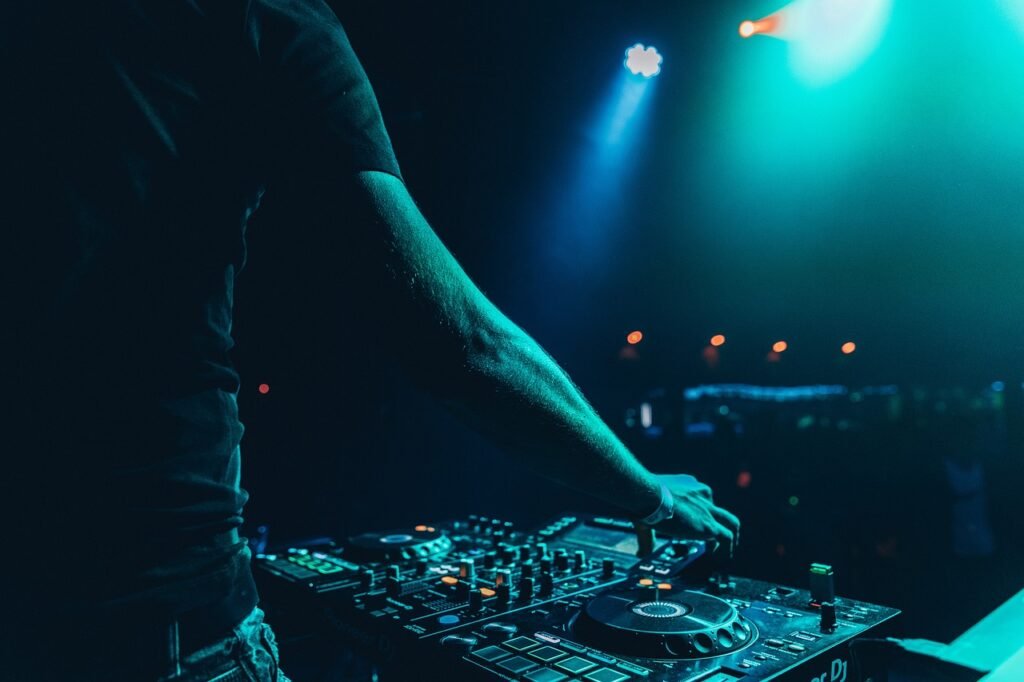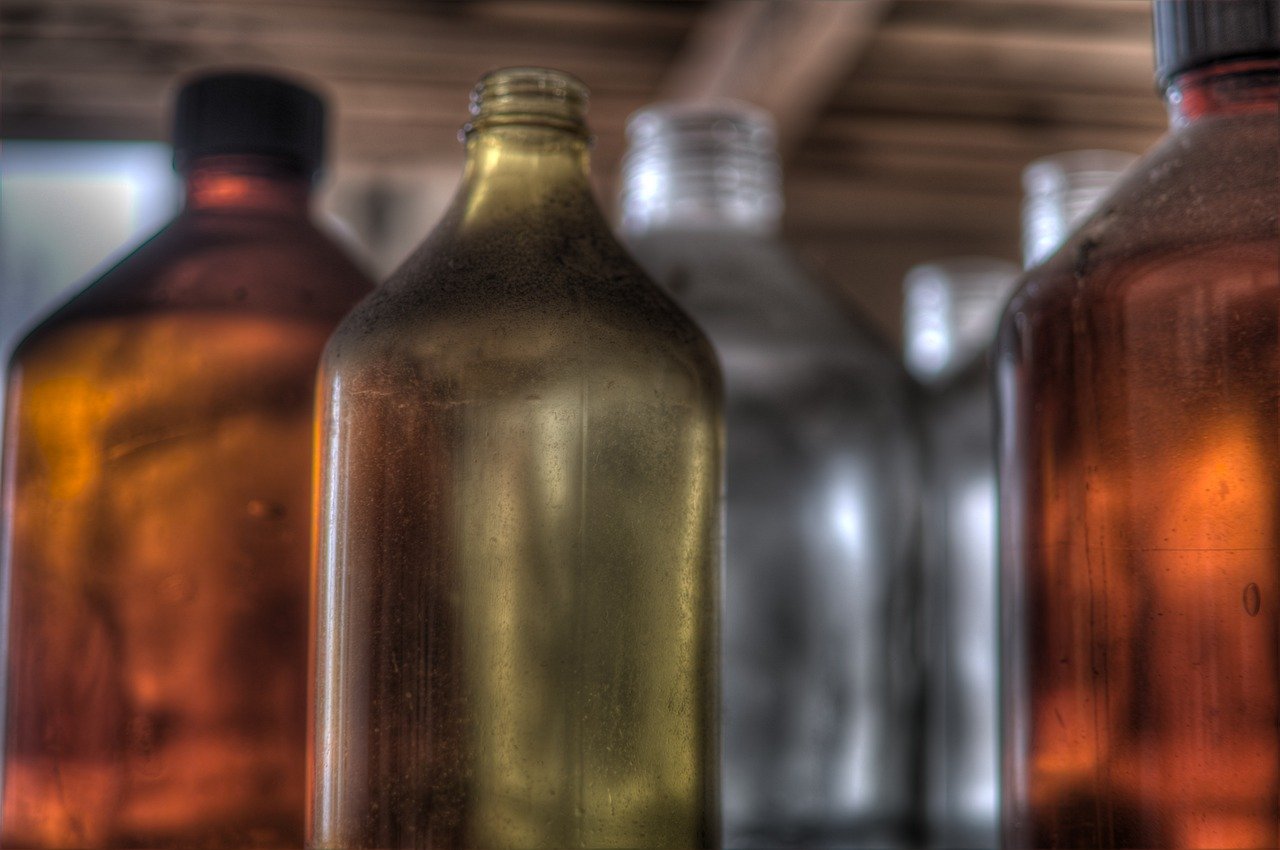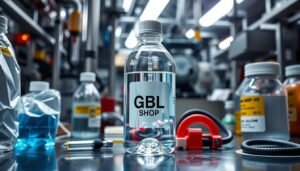
I. Introduction
A silent threat lurks in the shadowy world of German nightlife. Knockout drops, once the stuff of urban legends, have become an all too real danger. These substances, which can render a person unconscious and vulnerable, have sparked a wave of controversy and concern.
Why should you care? Imagine this: You're out with friends and enjoying an evening on the town. Suddenly everything goes black. Hours later you wake up and have no memory of what happened. A frightening scenario that is happening more and more frequently.
This article aims to shed light on the murky world of knockout drops, debunk myths and equip you with the knowledge to stay safe. So, grab a (non-manipulated) drink, and let's dive in.
II GBL: The silent threat
A. What is GBL?
Gamma-butyrolactone, or gamma-butyrolactone for short GBLis the chameleon of the chemical world. This harmless-looking liquid has a Jekyll-and-Hyde personality. On the one hand, it's a common industrial solvent used in everything from nail polish remover to plastics production. On the other hand, it's a dangerous precursor to GHB, one of the most notorious Knockout drops.
B. Properties: Odorless and tasteless
This is where it gets tricky. GBL is the ninja of substances - practically undetectable. It's colorless, odorless and has only a faint taste that can be easily masked in drinks. This makes it a favorite tool for those with evil intentions.
C. Legal status and ease of procurement
You'd think something that dangerous would be more closely guarded than Fort Knox, right? Wrong. In many countries, including Germany, GBL exists in a legal gray area. It's not classified as a controlled substance, which makes it alarmingly easy to buy online or even in some stores. It's like leaving the cookie jar unguarded in a room full of toddlers - trouble is inevitable.
D. Conversion to GHB in the body
This is where the real danger lies. Once ingested, GBL undergoes a rapid transformation in the body and becomes GHB. It's like a chemical transformer, transforming from an industrial solvent into a potent central nervous system depressant. This Jekyll-to-Hyde transformation happens faster than you can say "gamma-butyrolactone," making GBL a ticking time bomb for unsuspecting victims.
III. knockout drops: beyond GHB

A. GHB as a primary knockout drug
GHB, or gamma-hydroxybutyric acid, is the poster child for knockout drops. It's like the lead singer in a band of dangerous substances. Originally developed as an anesthetic, GHB quickly found its way into the party scene. Its effects? Rapid onset of drowsiness, confusion and amnesia - a dream for predators and a nightmare for victims.
B. Substances used as knockout drops
But GHB is not a solo act. There is a whole rogues' gallery of substances used for evil purposes. Rohypnol, the infamous "roofie", is like GHB's sinister cousin. Then there's ketamine, a veterinary anesthetic that can put users into a dissociative state. And let's not forget good old alcohol - used in excessive amounts, it can serve as just as effective a knockout as any designer drug.
C. Common misconceptions about knockout drops
Now, let's debunk some myths. First, knockout drops do not always render a person completely unconscious. Sometimes they induce a zombie-like state where the victim appears awake but has no control or memory. Secondly, these drugs do not always work immediately. The effects can take 15-30 minutes to kick in, giving abusers time to isolate their victims. Finally, it's not just drinks that can be manipulated. Food, cigarettes, even vape pens can be vehicles for these substances. The bottom line? Constant vigilance is key.
IV. The dangerous effects of GHB

A. Short-term effects
When GHB hits the system, it's like a roller coaster ride - but not the fun kind. Initially, users might experience euphoria and increased libido. But that's just the first drop. Dizziness, confusion and nausea quickly follow. Then comes the big crash: unconsciousness, sometimes within minutes. It's a rapid descent into vulnerability that can last for hours.
B. Long-term consequences
The GHB hangover isn't just a headache and some nausea. We're talking potential brain damage, breathing problems and a host of psychological issues. Chronic use can lead to addiction, with withdrawal symptoms that make alcohol DTs look like a walk in the park. It's like playing Russian roulette with your neurotransmitters - eventually your luck runs out. Knockout drops
C. Variability of effects based on dosage and individual factors
This is where it gets tricky. GHB affects everyone differently. Factors such as body weight, metabolism and tolerance all play a role. What is a "fun" dose for one person could be fatal for another. It's like trying to guess the number of jelly beans in a jar - except the price for guessing wrong is a trip to the emergency room or worse.
| Dosage (g) | Typical effects |
|---|---|
| 0,5 – 1,5 | Slight euphoria, relaxation |
| 1,5 – 2,5 | Increased sociability, reduced inhibitions |
| 2,5 – 3,5 | Drowsiness, confusion |
| 3,5+ | Unconsciousness, risk of overdose |
Note: These are approximate ranges and may vary considerably between individuals.
V. The drug-like nature of these substances
A. Similarities to recreational drugs
Don't be fooled by the industrial origins of GHB and its ilk. These substances can party just as hard as their illegal counterparts. Like ecstasy, they can induce feelings of euphoria and connection. Like alcohol, they lower inhibitions. And like opioids, they can suppress the central nervous system to dangerous levels. It's a chemical cocktail that mimics the effects of several classes of drugs, which makes it particularly insidious.
B. Addictive potential
This is where the party turns into a prison. GHB and similar substances are highly addictive. The brain's reward system is hijacked and creates a craving that is hard to shake off. Users find themselves chasing the initial high, increasing doses and frequency of use. Before they know it, they are caught in a web of addiction from which it is difficult to escape.
C. Psychological and physiological effects
The toll these drugs take is not just physical. They are equal opportunity destroyers that wreak havoc on both body and mind. Physically, chronic use can lead to respiratory problems, cardiovascular issues and neurological damage. Psychologically, we're talking about mood disorders, anxiety and cognitive impairment. It's as if these substances are playing a twisted game of Jenga with your health, pulling out crucial blocks until the whole structure collapses.
VI The deadly potential: overdose risks
A. Factors contributing to fatal overdoses
The line between a "good time" and a trip to the morgue is razor-thin for GHB and his relatives. Several factors can tip the scales towards tragedy. Mixing with alcohol or other depressants is like playing chemical Russian roulette. Individual tolerance levels vary widely, making dosing a dangerous guessing game. And the rapid onset of action means users can lapse into unconsciousness before they realize they've taken too much.
B. Statistics on GHB-, GBL- and BD-related deaths
The figures paint a bleak picture. In Germany alone, GHB-related deaths are on the rise. While exact figures are difficult to ascertain due to difficulties in detection, estimates suggest dozens of deaths per year. And for every death, there are countless near misses and hospitalizations. It's a silent epidemic hiding in plain sight.
C. Challenges in the identification and treatment of overdoses
Treating GHB overdoses is like trying to hit a moving target. The drug's rapid metabolism means it often doesn't show up in standard toxicology screenings. Symptoms can mimic other conditions, leading to misdiagnosis. And the narrow therapeutic index means that the difference between an effective dose and a lethal one is frighteningly small. It's a medical minefield that keeps emergency room staff on their toes.
VII Increased dangers of polydrug use

A. GHB interactions with other substances
Mixing GHB with other substances is like pouring gasoline on a fire - it only increases the danger. Alcohol in particular is a deceptive dance partner for GHB. Both suppress the central nervous system and create a synergistic effect that can quickly spiral out of control. Other depressants such as benzodiazepines or opioids can similarly potentiate the effects of GHB, turning a risky situation into a potentially deadly one.
B. Increased risk of respiratory arrest
When GHB combines with other downers, your respiratory system is the biggest loser. The combined effect can slow breathing to dangerous levels, sometimes even stopping it altogether. It's like your lungs deciding to take an extended coffee break - except in this case, the break could be permanent. The risk of respiratory arrest skyrockets, turning what might have been a recoverable overdose into a life-threatening emergency.
C. Difficulties in the emergency care of mixed use incidents
For first responders, dealing with polydrug overdoses is like trying to solve a Rubik's cube blindfolded. The combination of substances can cause unpredictable symptoms, making diagnosis difficult. Standard treatments may be ineffective or even dangerous. And the race against time becomes even more critical as the window of opportunity for successful intervention narrows. It's a high-stakes puzzle that requires quick thinking and specialized knowledge to solve.
VIII Legal landscape: liquid ecstasy and pro-drugs
A. Definition of pro-drugs
Pro-drugs are the ultimate shape-shifters of the chemical world. These substances start out relatively harmless, but transform into active drugs once ingested. GBL is a classic example, transforming into GHB in the body. It's like a wolf in sheep's clothing, slipping past legal barriers only to reveal its true nature once consumed.
B. Changes in German law regarding the trade in pro-drugs
Germany has tried to keep up with the ever-evolving world of pro-drugs. Recent changes to the law have aimed to remove loopholes


